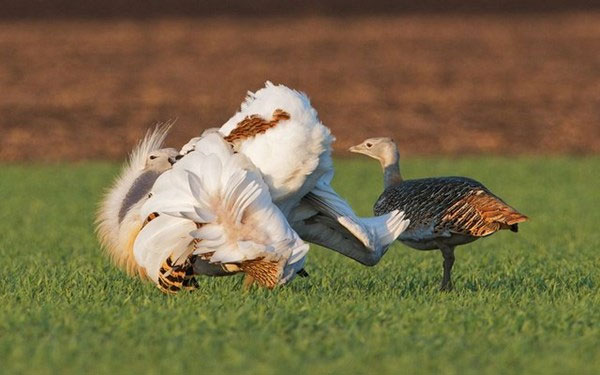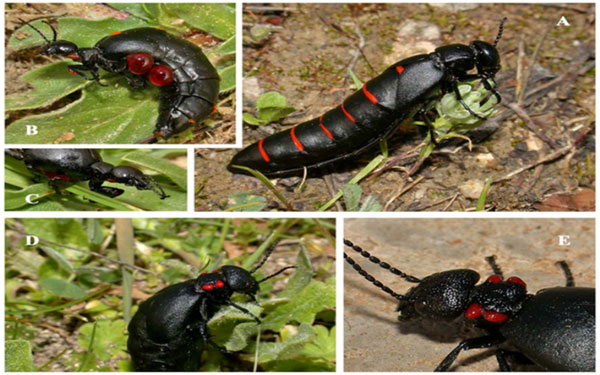Exotic species that eat the bug beetle poison to clean up
Scientists have discovered that male Otis tarda birds (large-scale birds) do not hesitate to eat poisonous beetles to help them achieve more success in their dating partners during mating season. .
Previously, the phenomenon of large birds living in Europe and Asia eating poisonous insects to help them kill intestinal parasites, such as bacteria, nematodes and tapeworms, was not far away. strange to researchers.

The Oir male is showing off his "lower body" to seduce his partner.
But a new finding, published in the journal Plos One, shows that large plots that eat beetles are much more poisonous than females of the same type.
Scientists believe that the interesting reason for the male bird to do so because he wants to get a strong acupoint, not king, to be able to 'show off' in front of his partner in the courtship.

Beetle poison, the favorite dish of O male male bird.
In fact, during the mating season, male birds often gather on a piece of land and take turns flirting with the females. They squeeze the body, curl the tail and inflate the neck skin.
Surprisingly, the children are not attracted to the displays above, but they pay more attention to the tail.
Researchers believe that this behavior of children may be to assess whether the acupoints (excretory organs and sexual intercourse of birds) are healthy or at risk of transmission of sexually transmitted diseases. or not.
Even the observation of children can detect whether the male's vented hole has diarrhea, nematode or tapeworm bacteria.

When looking at the male acupoints, the female can assess your health to see if there are bacteria, worms, or fluke.
The team also collected faecal samples of males and females, showing that eating beetles Berberomeloe majalis and Physomeloe corallifer, a deadly poisonous bug of cantharidin, is the hobby of females.
However, the team is continuing to reinforce the hypothesis, finding more evidence to show the link between poisonous bug diets and the success of this Large-headed Oyster bird.
- Not an alien, this is the most exotic giant bug on Earth
- A beetle named after the young environmental activist Greta
- The face of the species knows 'steals' the poison of another species
- Frogs, snakes, lizards ... have extremely dangerous venom but why don't they harm themselves?
- The assassin unleashes the beetle at mating
- 10 arthropods 'weird' in nature
- Hello! I am a stalker and these are aspects you have never known about me!
- Strange bird with a deep resemblance
- Giant beetle 'compared to' emperor scorpions: Which species deserves the title?
- New species of stone beetle are found in the New Zealand mountains
- Animals that steal the poison of another species
- The beetle species has a strange bright white color
 Animal 'suffering' after hibernation
Animal 'suffering' after hibernation Why do goats climb well?
Why do goats climb well? Scientists were surprised to see chimpanzees eating turtles
Scientists were surprised to see chimpanzees eating turtles Giant catfish died deadly due to drought in Thailand
Giant catfish died deadly due to drought in Thailand